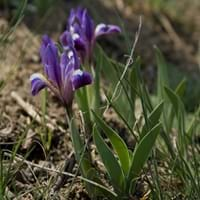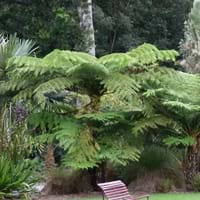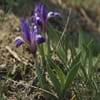Life Span
Perennial
Perennial
Origin
World, Pandemic, North America, Europe, Africa, Asia
Australia
Types
Alizes
Bumblebee Deelite
Maui Moonlight
Langport Wren
Sarah Taylor
Titan's Glory
Thornbird
Jane Phillips
Orinoco Flow
Not Available
Number of Varieties
Not Available
Habitat
gardens, Hillside, Riverbanks, Warmer regions, Wet forest
Damp Places
USDA Hardiness Zone
Not Available
10-15
Sunset Zone
Not Available
H2, 8, 9, 14, 15, 16, 17, 19, 20, 21, 22, 23, 24
Habit
Clump-Forming
Arching/Fountain-shaped
Minimum Height
Not Available
Minimum Width
Not Available
Flower Color
White, Yellow, Blue, Purple, Orange, Pink, Rose, Coral, Peach, Burgundy, Lavender, Plum, Orange Red, Dark Salmon, Bronze, Chocolate, Black
Non Flowering Plant
Flower Color Modifier
Bicolor
Bicolor
Fruit Color
Not Available
Not Available
Leaf Color in Spring
Not Available
Light Green
Leaf Color in Summer
Not Available
Dark Green
Leaf Color in Fall
Not Available
Dark Green
Leaf Color in Winter
Light Green
Dark Green
Leaf Shape
Long Linear
Fern like
Plant Season
Not Available
Spring, Summer, Fall, Winter
Sunlight
Full Sun, Partial Sun
Partial shade
Type of Soil
Clay, Loam, Sand
Loam
The pH of Soil
Acidic, Neutral, Alkaline
Acidic
Soil Drainage
Well drained
Average
Bloom Time
Not Available
Not Available
Tolerances
Drought
Not Available
Where to Plant?
Ground, Pot
Ground
How to Plant?
From Rhizomes, Stem Planting
Spores
Plant Maintenance
Medium
Medium
Watering Requirements
Does not require lot of watering, Keep ground moist, Water when soil is dry
Requires consistently moist soil
In Summer
Lots of watering
Lots of watering
In Spring
Moderate
Moderate
In Winter
Average Water
Average Water
Soil pH
Acidic, Neutral, Alkaline
Acidic
Soil Type
Clay, Loam, Sand
Loam
Soil Drainage Capacity
Well drained
Average
Sun Exposure
Full Sun, Partial Sun
Full Shade, Partial shade
Pruning
Remove dead leaves, Remove dead or diseased plant parts, Requires very little pruning
Remove damaged leaves, Remove dead branches, Remove dead leaves
Fertilizers
All-Purpose Liquid Fertilizer
All-Purpose Liquid Fertilizer
Pests and Diseases
Bacterial Diseases, Fungal Diseases, Viruses
Squirrels
Plant Tolerance
Drought
Drought
Flower Petal Number
Single
Single
Foliage Texture
Medium
Fine
Foliage Sheen
Matte
Matte
Attracts
Bees, Butterflies
Ants
Allergy
Asthma
Carcinogenic
Aesthetic Uses
Beautification, Showy Purposes
Not Available
Beauty Benefits
Not Available
Not Available
Environmental Uses
Air purification
Air purification
Medicinal Uses
No Medicinal Use
Astringent
Part of Plant Used
Flowers, Leaves, Rhizomes, Root
Leaves, Stem
Other Uses
Making Perfumes, Oil is used for aromatherapy, Used as a sedative, Used as essential oil
Not Available
Used As Indoor Plant
No
No
Used As Outdoor Plant
Yes
Yes
Garden Design
Bedding Plant, Cutflower, Mixed Border, Rock Garden, Wall
Container, Feature Plant, Tropical
Botanical Name
IRIS
DICKSONIA antarctica
Common Name
Iris
Australian tree fern, Tasmanian tree fern, hardy tree fern, soft tree fern, woolly tree fern
In Hindi
Iris
Tasmanian Tree Fern
In German
Iris
Tasmanian Tree Fern
In French
Iris
Dicksonia antarctica
In Spanish
Iris
Balantium antarcticum
In Greek
Ίρις
Tasmanian Tree Fern
In Portuguese
Íris
Dicksonia antarctica
In Polish
Irys
Diksonia antarktyczna
In Latin
Iris
Tasmanian Tree Fern
Phylum
Tracheophyta
Pteridophyta
Class
Liliopsida
Filicopsida
Order
Asparagales
Polypodiales
Family
Iridaceae
Dicksoniaceae
Clade
Angiosperms, Monocots
Not Available
Tribe
Irideae
Not Available
Subfamily
Iridoideae
Not Available
Number of Species
Not Available
Importance of Iris and Tasmanian Tree Fern
Want to have the most appropriate plant for your garden? You might want to know the importance of Iris and Tasmanian Tree Fern. Basically, these two plants vary in many aspects. Compare Iris and Tasmanian Tree Fern as they differ in many characteristics such as their life, care, benefits, facts, etc. Every gardener must at least have the slightest clue about the plants he wants to plant in his garden. Compare their benefits, which differ in many ways like facts and uses. The medicinal use of Iris is No Medicinal Use whereas of Tasmanian Tree Fern is Astringent. Iris has beauty benefits as follows: Not Available while Tasmanian Tree Fern has beauty benefits as follows: Not Available.
Compare Facts of Iris vs Tasmanian Tree Fern
How to choose the best garden plant for your garden depending upon its facts? Here garden plant comparison will help you to solve this query. Compare the facts of Iris vs Tasmanian Tree Fern and know which one to choose. As garden plants have benefits and other uses, allergy is also a major drawback of plants for some people. Allergic reactions of Iris are Asthma whereas of Tasmanian Tree Fern have Carcinogenic respectively. Having a fruit bearing plant in your garden can be a plus point of your garden. Iris has no showy fruits and Tasmanian Tree Fern has no showy fruits. Also Iris is flowering and Tasmanian Tree Fern is not flowering . You can compare Iris and Tasmanian Tree Fern facts and facts of other plants too.





